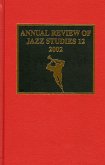- Gebundenes Buch
- Merkliste
- Auf die Merkliste
- Bewerten Bewerten
- Teilen
- Produkt teilen
- Produkterinnerung
- Produkterinnerung
At the center of Bartók's oeuvre are his string quartets, which are generally acknowledged as some of the most significant pieces of 20th century chamber music. The String Quartets of Béla Bartók examines these remarkable works from a range of theoretical and methodological perspectives.
Andere Kunden interessierten sich auch für
![Cultivating String Quartets in Beethoven's Vienna Cultivating String Quartets in Beethoven's Vienna]() Nancy NovemberCultivating String Quartets in Beethoven's Vienna137,99 €
Nancy NovemberCultivating String Quartets in Beethoven's Vienna137,99 €![Michael Tippett's Fifth String Quartet Michael Tippett's Fifth String Quartet]() Thomas SchuttenhelmMichael Tippett's Fifth String Quartet83,99 €
Thomas SchuttenhelmMichael Tippett's Fifth String Quartet83,99 €![String Quartets String Quartets]() Mara ParkerString Quartets243,99 €
Mara ParkerString Quartets243,99 €![Courtly Love Songs of Medieval France Courtly Love Songs of Medieval France]() Mary O'NeillCourtly Love Songs of Medieval France284,99 €
Mary O'NeillCourtly Love Songs of Medieval France284,99 €![Music from Behind the Bridge Music from Behind the Bridge]() Shannon DudleyMusic from Behind the Bridge246,99 €
Shannon DudleyMusic from Behind the Bridge246,99 €![The Italian Cantata in Vienna The Italian Cantata in Vienna]() Lawrence BennettThe Italian Cantata in Vienna66,99 €
Lawrence BennettThe Italian Cantata in Vienna66,99 €![Annual Review of Jazz Studies 12: 2002 Annual Review of Jazz Studies 12: 2002]() Annual Review of Jazz Studies 12: 2002144,99 €
Annual Review of Jazz Studies 12: 2002144,99 €-
-
-
At the center of Bartók's oeuvre are his string quartets, which are generally acknowledged as some of the most significant pieces of 20th century chamber music. The String Quartets of Béla Bartók examines these remarkable works from a range of theoretical and methodological perspectives.
Hinweis: Dieser Artikel kann nur an eine deutsche Lieferadresse ausgeliefert werden.
Hinweis: Dieser Artikel kann nur an eine deutsche Lieferadresse ausgeliefert werden.
Produktdetails
- Produktdetails
- Verlag: Hurst & Co.
- Seitenzahl: 368
- Erscheinungstermin: 23. Mai 2014
- Englisch
- Abmessung: 241mm x 161mm x 35mm
- Gewicht: 683g
- ISBN-13: 9780199936182
- ISBN-10: 0199936188
- Artikelnr.: 38078210
- Herstellerkennzeichnung
- Libri GmbH
- Europaallee 1
- 36244 Bad Hersfeld
- gpsr@libri.de
- Verlag: Hurst & Co.
- Seitenzahl: 368
- Erscheinungstermin: 23. Mai 2014
- Englisch
- Abmessung: 241mm x 161mm x 35mm
- Gewicht: 683g
- ISBN-13: 9780199936182
- ISBN-10: 0199936188
- Artikelnr.: 38078210
- Herstellerkennzeichnung
- Libri GmbH
- Europaallee 1
- 36244 Bad Hersfeld
- gpsr@libri.de
Dániel Péter Biró is Associate Professor of Composition and Music Theory at the University of Victoria. Dr. Biró completed his PhD in composition at Princeton University in 2004. Awarded the Hungarian Government's Kodály Award for Hungarian composers and the Gigahertz Prize for Electronic Music, his compositions have been performed around the world. Dániel Péter Biró is co-editor of Search - Journal for New Music and Culture. Harald Krebs received his Ph.D. in music theory from Yale University in 1980. He is Distinguished Professor and head of the theory program at the School of Music at the University of Victoria, and President of the Society for Music Theory (2011-13). His book Fantasy Pieces: Metrical Dissonance in the Music of Robert Schumann, published by Oxford University Press in 1999, won the Society for Music Theory's Wallace Berry Award in 2002.
* Contributors
* Intoduction - Dániel Péter Biró and Harald Krebs
* Chapter 1 - Paul Wilson - "Sonata Form in the First Movement of
Bartók's Fourth String Quartet"
* Chapter 2 - Jonathan Bernard - "Bartók and Traditional Form
Description: Some Issues Arising from the Middle and Late String
Quartets"
* Chapter 3 - Jee Yeon Ryu - "The Structural Role of Formal Contrast in
Beethoven's Piano Sonata Op. 101 and Bartók's Third String Quartet"
* Chapter 4 - Harald Krebs - "In Beethoven's Footsteps: Metrical
Dissonance in Bartók's String Quartets"
* Chapter 5 - John Roeder - "Bartók's Grooves: Metrical Processes in
the Fourth String Quartet"
* Chapter 6 - Daphne Leong - "Between Sound and Structure: Folk Rhythm
at the Center of Bartók's Fifth String Quartet"
* Chapter 7 - Elliott Antokoletz - "The Romanian 'Long Song' as
Structural Convergent Point for the Chiasmal Harmonic Design in
Bartók's Fourth String Quartet"
* Chapter 8 - William Benjamin - "The Use of Tonal Concepts and their
Attendant Modes of Continuity in the Inner Hearing of Bartók's String
Quartets"
* Chapter 9 - Edward Gollin - "Aggregate Structure and Cyclic Design at
the Conclusion of Bartók's Second String Quartet"
* Chapter 10 - Charles Morrison - "The Realization(s) of Functional
Qualities in Bartók's Second String Quartet"
* Chapter 11 - Judit Frigyesi - "How Barbaric is Bartók's forte? -
About the Performance of Bartók's Fast Movements for Piano and
Strings, with Emphasis on the First Movement of the Fifth String
Quartet"
* Chapter 12 - Martin Iddon - "Bartók's Relics: Nostalgia in György
Ligeti's String Quartet No. 2"
* Chapter 13 - Dániel Péter Biró - "Bartók's Quartets, Folk Music, and
the Anxiety of Influence"
* Chapter 14 - Friedemann Sallis - "Recycled Flowers: Quotation,
Paraphrase and Allusion in György Kurtág's Officium breve in memoriam
Andreæ Szervánszky Op. 28 for String Quartet"
* Epilogue - Dániel Péter Biró and Martin Iddon - "Bartók's Present"
* Bibliography
* Intoduction - Dániel Péter Biró and Harald Krebs
* Chapter 1 - Paul Wilson - "Sonata Form in the First Movement of
Bartók's Fourth String Quartet"
* Chapter 2 - Jonathan Bernard - "Bartók and Traditional Form
Description: Some Issues Arising from the Middle and Late String
Quartets"
* Chapter 3 - Jee Yeon Ryu - "The Structural Role of Formal Contrast in
Beethoven's Piano Sonata Op. 101 and Bartók's Third String Quartet"
* Chapter 4 - Harald Krebs - "In Beethoven's Footsteps: Metrical
Dissonance in Bartók's String Quartets"
* Chapter 5 - John Roeder - "Bartók's Grooves: Metrical Processes in
the Fourth String Quartet"
* Chapter 6 - Daphne Leong - "Between Sound and Structure: Folk Rhythm
at the Center of Bartók's Fifth String Quartet"
* Chapter 7 - Elliott Antokoletz - "The Romanian 'Long Song' as
Structural Convergent Point for the Chiasmal Harmonic Design in
Bartók's Fourth String Quartet"
* Chapter 8 - William Benjamin - "The Use of Tonal Concepts and their
Attendant Modes of Continuity in the Inner Hearing of Bartók's String
Quartets"
* Chapter 9 - Edward Gollin - "Aggregate Structure and Cyclic Design at
the Conclusion of Bartók's Second String Quartet"
* Chapter 10 - Charles Morrison - "The Realization(s) of Functional
Qualities in Bartók's Second String Quartet"
* Chapter 11 - Judit Frigyesi - "How Barbaric is Bartók's forte? -
About the Performance of Bartók's Fast Movements for Piano and
Strings, with Emphasis on the First Movement of the Fifth String
Quartet"
* Chapter 12 - Martin Iddon - "Bartók's Relics: Nostalgia in György
Ligeti's String Quartet No. 2"
* Chapter 13 - Dániel Péter Biró - "Bartók's Quartets, Folk Music, and
the Anxiety of Influence"
* Chapter 14 - Friedemann Sallis - "Recycled Flowers: Quotation,
Paraphrase and Allusion in György Kurtág's Officium breve in memoriam
Andreæ Szervánszky Op. 28 for String Quartet"
* Epilogue - Dániel Péter Biró and Martin Iddon - "Bartók's Present"
* Bibliography
* Contributors
* Intoduction - Dániel Péter Biró and Harald Krebs
* Chapter 1 - Paul Wilson - "Sonata Form in the First Movement of
Bartók's Fourth String Quartet"
* Chapter 2 - Jonathan Bernard - "Bartók and Traditional Form
Description: Some Issues Arising from the Middle and Late String
Quartets"
* Chapter 3 - Jee Yeon Ryu - "The Structural Role of Formal Contrast in
Beethoven's Piano Sonata Op. 101 and Bartók's Third String Quartet"
* Chapter 4 - Harald Krebs - "In Beethoven's Footsteps: Metrical
Dissonance in Bartók's String Quartets"
* Chapter 5 - John Roeder - "Bartók's Grooves: Metrical Processes in
the Fourth String Quartet"
* Chapter 6 - Daphne Leong - "Between Sound and Structure: Folk Rhythm
at the Center of Bartók's Fifth String Quartet"
* Chapter 7 - Elliott Antokoletz - "The Romanian 'Long Song' as
Structural Convergent Point for the Chiasmal Harmonic Design in
Bartók's Fourth String Quartet"
* Chapter 8 - William Benjamin - "The Use of Tonal Concepts and their
Attendant Modes of Continuity in the Inner Hearing of Bartók's String
Quartets"
* Chapter 9 - Edward Gollin - "Aggregate Structure and Cyclic Design at
the Conclusion of Bartók's Second String Quartet"
* Chapter 10 - Charles Morrison - "The Realization(s) of Functional
Qualities in Bartók's Second String Quartet"
* Chapter 11 - Judit Frigyesi - "How Barbaric is Bartók's forte? -
About the Performance of Bartók's Fast Movements for Piano and
Strings, with Emphasis on the First Movement of the Fifth String
Quartet"
* Chapter 12 - Martin Iddon - "Bartók's Relics: Nostalgia in György
Ligeti's String Quartet No. 2"
* Chapter 13 - Dániel Péter Biró - "Bartók's Quartets, Folk Music, and
the Anxiety of Influence"
* Chapter 14 - Friedemann Sallis - "Recycled Flowers: Quotation,
Paraphrase and Allusion in György Kurtág's Officium breve in memoriam
Andreæ Szervánszky Op. 28 for String Quartet"
* Epilogue - Dániel Péter Biró and Martin Iddon - "Bartók's Present"
* Bibliography
* Intoduction - Dániel Péter Biró and Harald Krebs
* Chapter 1 - Paul Wilson - "Sonata Form in the First Movement of
Bartók's Fourth String Quartet"
* Chapter 2 - Jonathan Bernard - "Bartók and Traditional Form
Description: Some Issues Arising from the Middle and Late String
Quartets"
* Chapter 3 - Jee Yeon Ryu - "The Structural Role of Formal Contrast in
Beethoven's Piano Sonata Op. 101 and Bartók's Third String Quartet"
* Chapter 4 - Harald Krebs - "In Beethoven's Footsteps: Metrical
Dissonance in Bartók's String Quartets"
* Chapter 5 - John Roeder - "Bartók's Grooves: Metrical Processes in
the Fourth String Quartet"
* Chapter 6 - Daphne Leong - "Between Sound and Structure: Folk Rhythm
at the Center of Bartók's Fifth String Quartet"
* Chapter 7 - Elliott Antokoletz - "The Romanian 'Long Song' as
Structural Convergent Point for the Chiasmal Harmonic Design in
Bartók's Fourth String Quartet"
* Chapter 8 - William Benjamin - "The Use of Tonal Concepts and their
Attendant Modes of Continuity in the Inner Hearing of Bartók's String
Quartets"
* Chapter 9 - Edward Gollin - "Aggregate Structure and Cyclic Design at
the Conclusion of Bartók's Second String Quartet"
* Chapter 10 - Charles Morrison - "The Realization(s) of Functional
Qualities in Bartók's Second String Quartet"
* Chapter 11 - Judit Frigyesi - "How Barbaric is Bartók's forte? -
About the Performance of Bartók's Fast Movements for Piano and
Strings, with Emphasis on the First Movement of the Fifth String
Quartet"
* Chapter 12 - Martin Iddon - "Bartók's Relics: Nostalgia in György
Ligeti's String Quartet No. 2"
* Chapter 13 - Dániel Péter Biró - "Bartók's Quartets, Folk Music, and
the Anxiety of Influence"
* Chapter 14 - Friedemann Sallis - "Recycled Flowers: Quotation,
Paraphrase and Allusion in György Kurtág's Officium breve in memoriam
Andreæ Szervánszky Op. 28 for String Quartet"
* Epilogue - Dániel Péter Biró and Martin Iddon - "Bartók's Present"
* Bibliography








